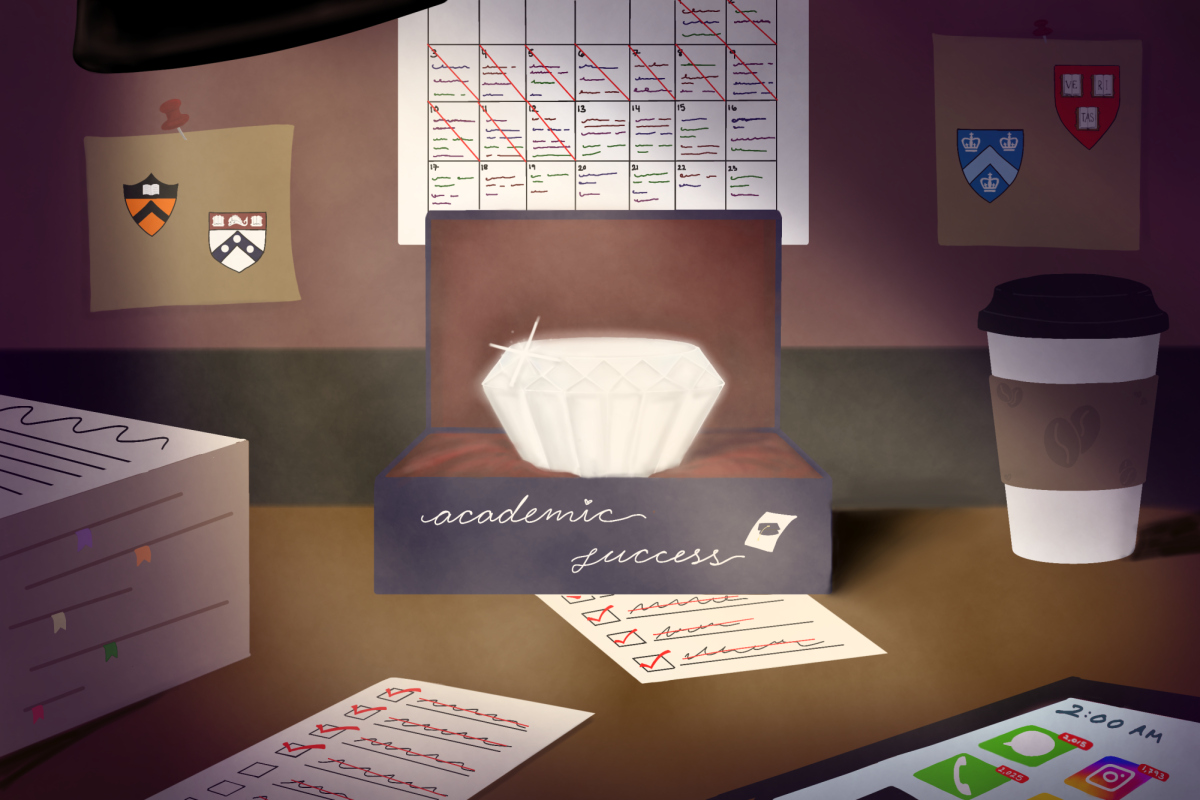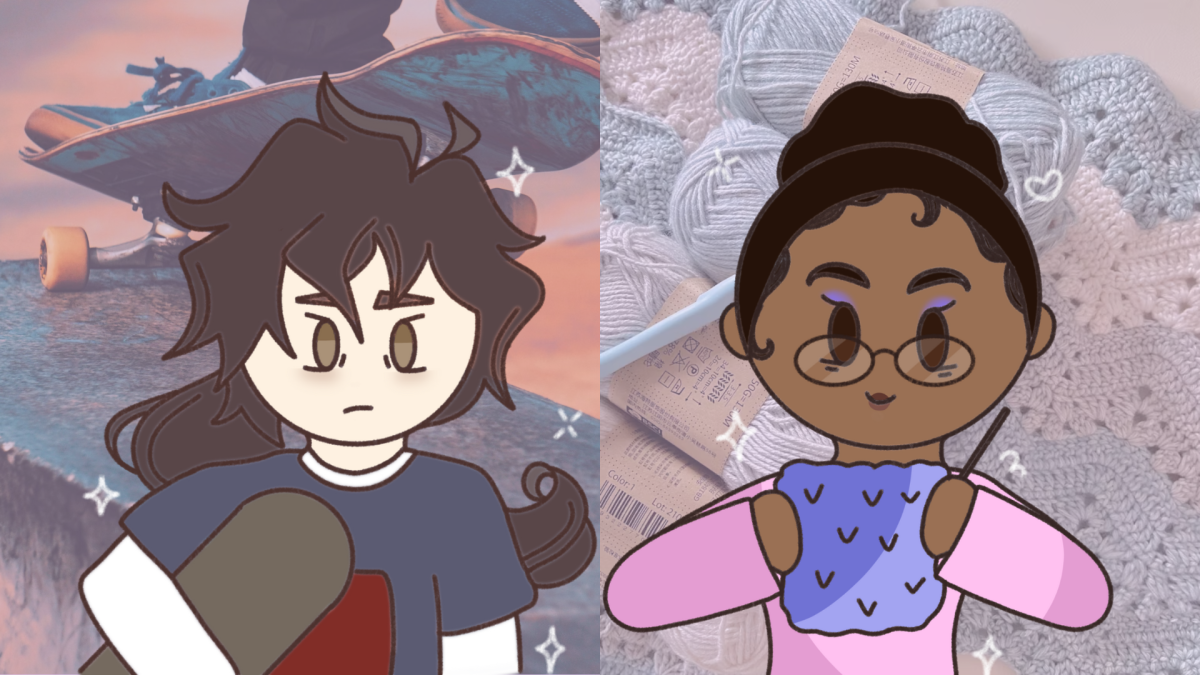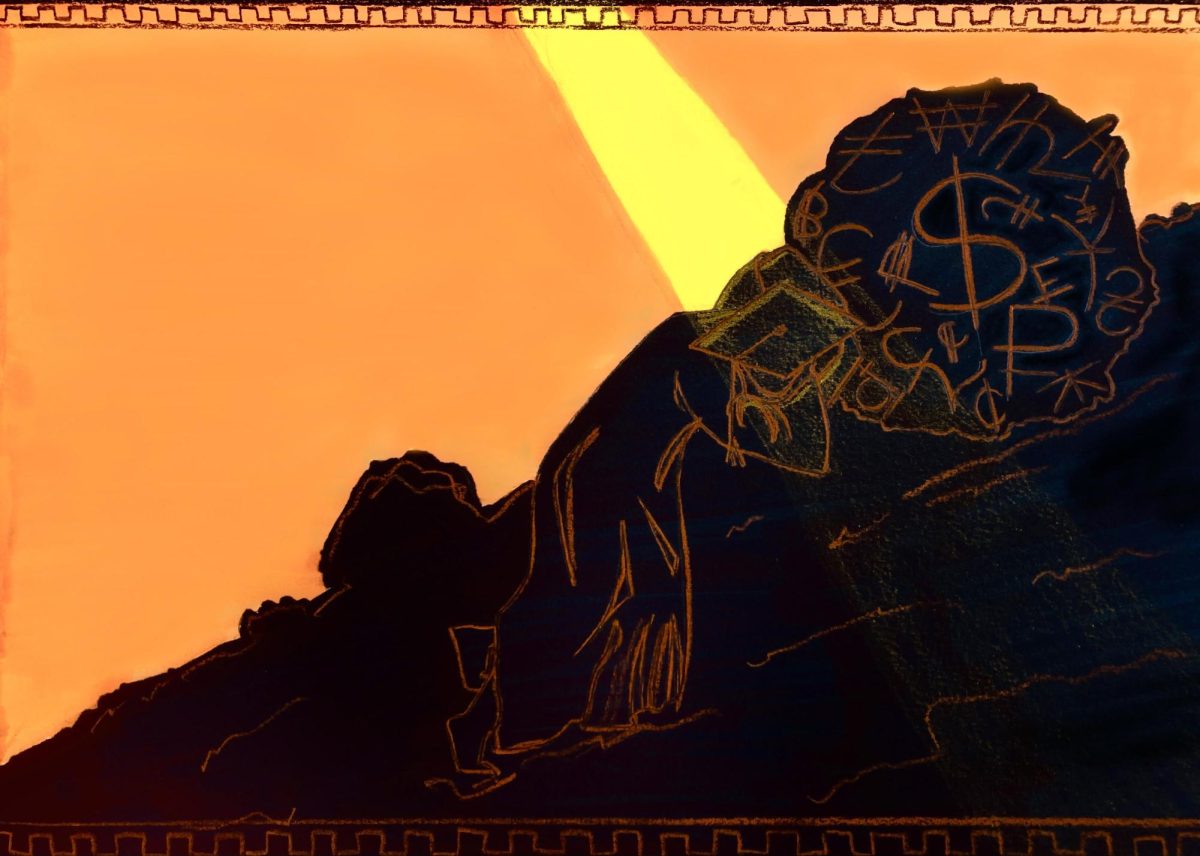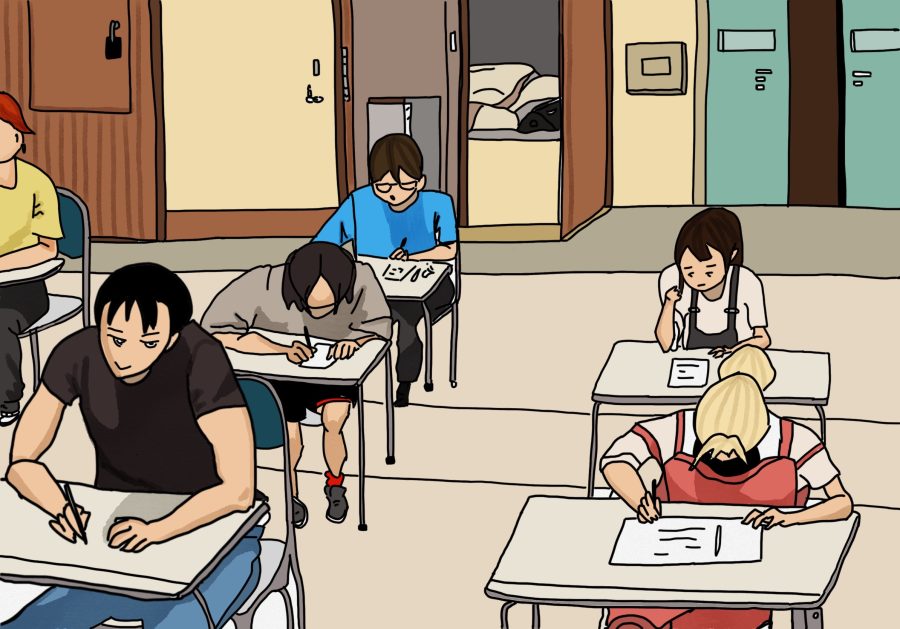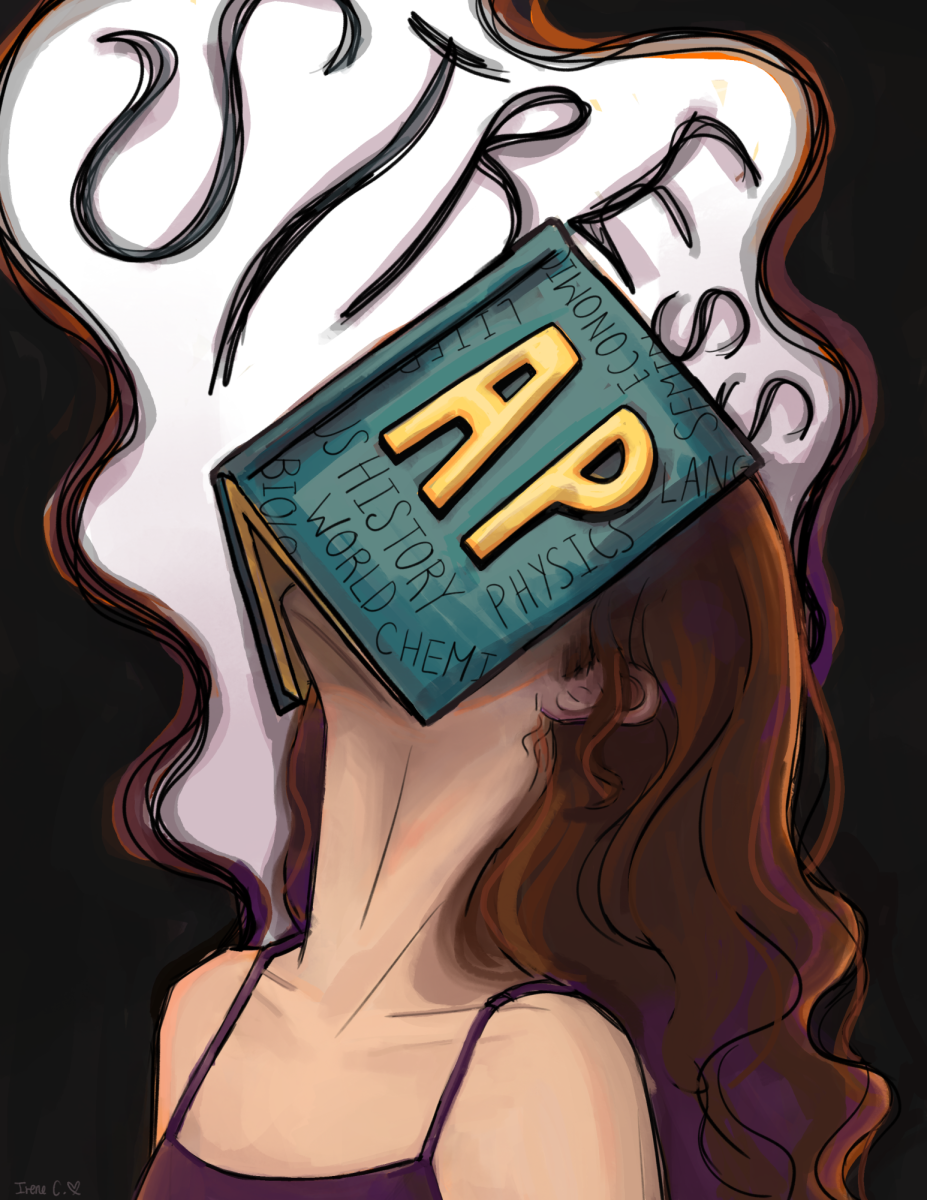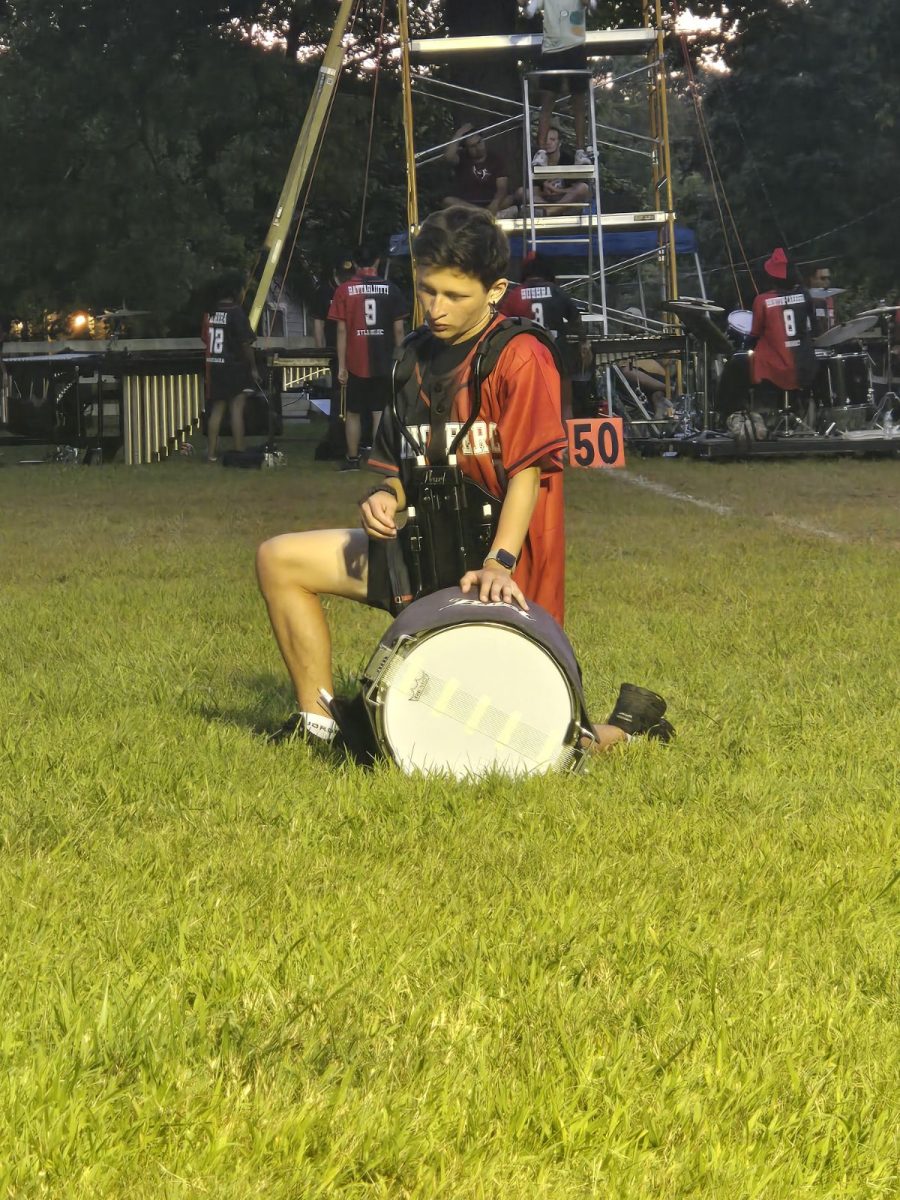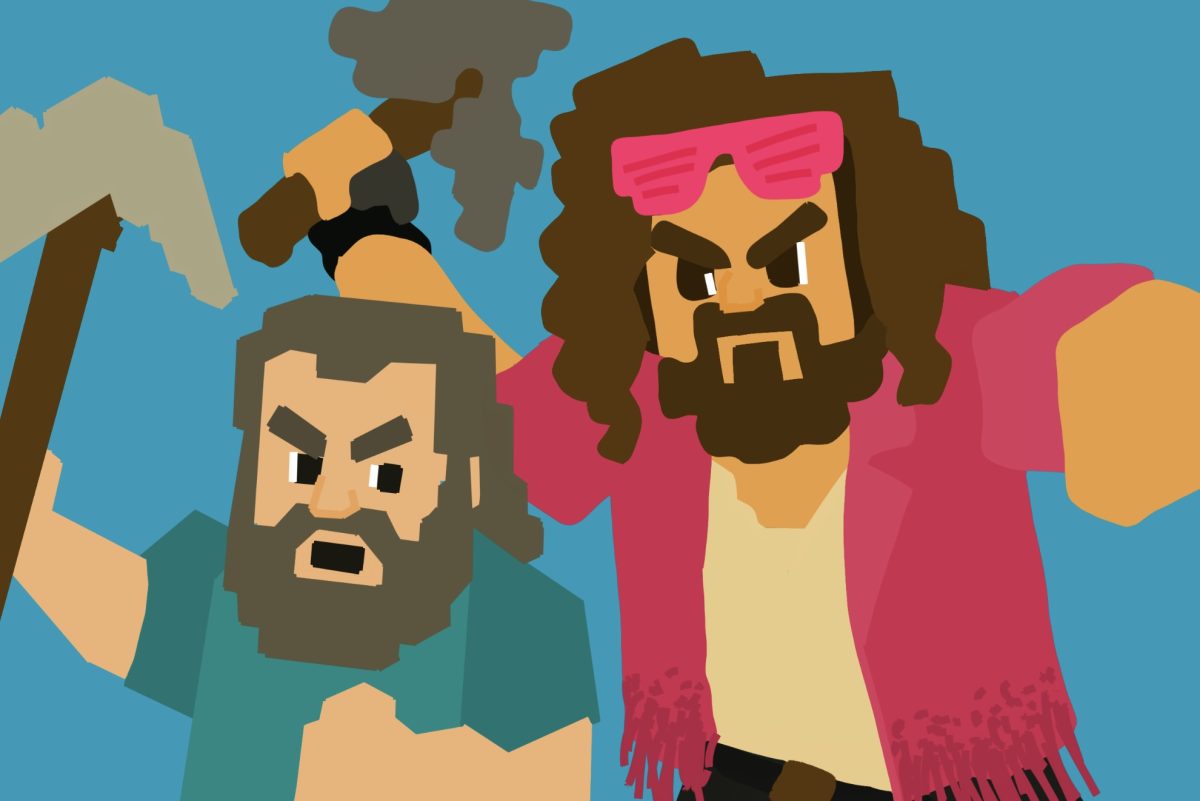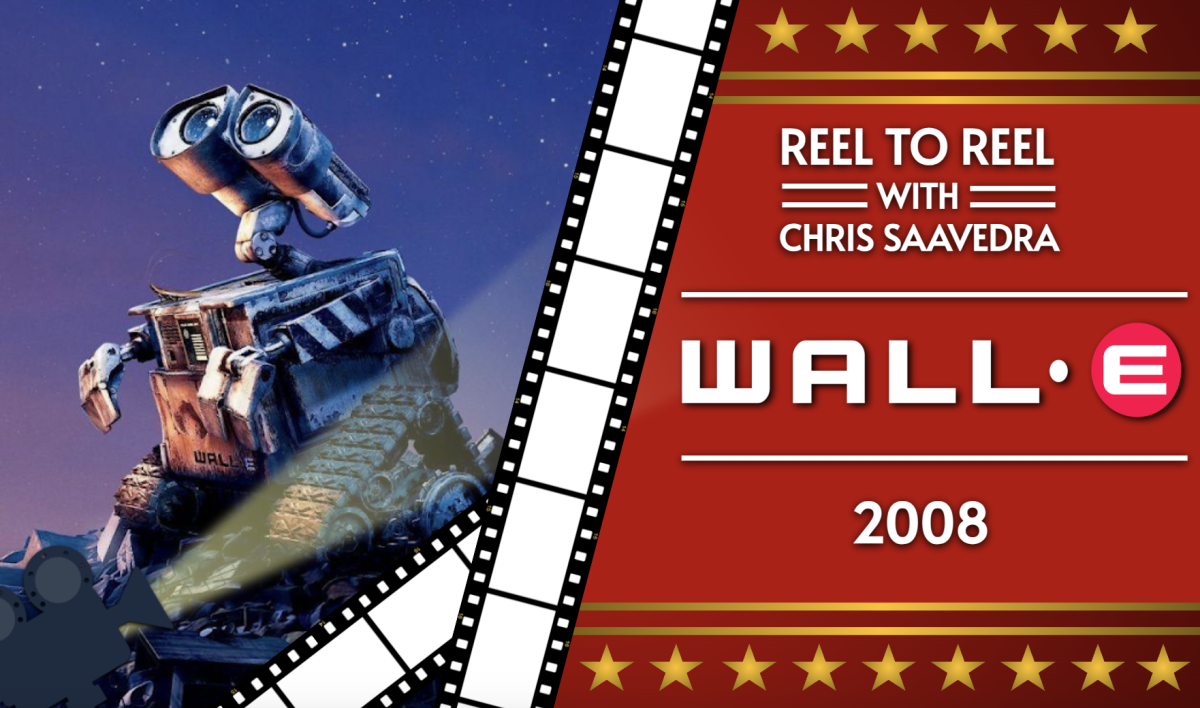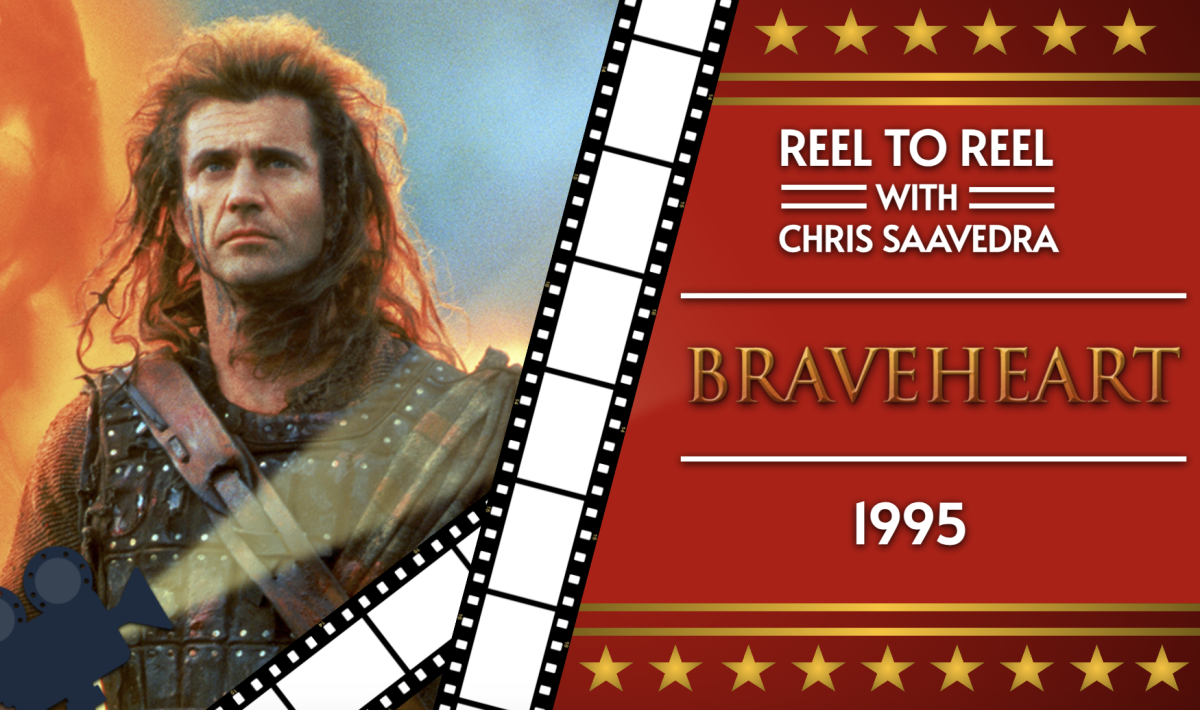Rain World: A Hidden Gem in Gaming

A King Vulture, one of the game’s many apex predators, hunting and preparing to fire its tusks at the defenseless slugcat below.
November 7, 2022
Video games are one of the most popular outlets for de-stressing and relaxing after a difficult day or assessment or in preparation for the weekend at Edison High School. Modern video games are a testament to how far the technology has come and evolved from games in the form of simple, pixelated platformers in the 1980s and 1990s to current highly realistic games within the FPS and sandbox genres.
Moreover, with new game engines being developed, the technology to create a game without an immense budget is at one’s fingertips today, inspiring newer game developers and increasing the rate of growth of the video game industry as more ideas, concepts, and meanings are introduced. One such example is Rain World, a relatively unknown “indie” game with a possibly revolutionizing impact on the significance of creating and playing a video game.
Rain World was created by indie developer studio Videocult, consisting of developers Joar Jakobsson (concept, programming, art, design), James Primate (music, level design, sound, business), Allegra “Del” Northern (artwork, testing), and Lydia Esrig (music and audio, voice acting, testing), and released internationally and published by Adult Swim Games on March 28, 2017.
The concept of Rain World follows the story of a world where the Ancients, the advanced civilization on the planet, disappear and leave behind their cities and creations, most notably, the Iterators, supercomputers that take enormous amounts of water to cool down. Excessive amounts of water vapor are released into the air, which creates a torrential rain which lasts for weeks and kills any creature caught in it. The beginning cutscenes of the game show a young “slugcat”, a small, ferret-cat like, and intelligent creature, get separated from its family during the downpour, revealing that the initial goal of the game is to reunite with the slugcat’s family.
The player is expected to endure deadly creatures and harsh terrains while doing so and eventually, an unexpected change in the game’s story leads the slugcat to change its goal to an entirely different one with a surprisingly spiritual twist.
One of the Rain World’s most prominent achievements is utilizing pixel art and contrasts of colors to develop a harsh atmosphere and ecosystem of the game and, simultaneously, the theme of spirituality. The art style of the game is a sixteen bit game with scenery ranges from dark and murky to vibrant and beautiful, some screens even have very subtle background details that hint about the overarching theme of the game, such as desire and abandonment of arrogance.
Contrasting most video games, the dialogue never reveals all the aspects of the story, forcing players to piece together and uncover the hidden lore of the world and the ancient civilization it once housed. Also, unlike most video games, where the mechanics and Artificial Intelligence (AI) are focused on the player like rendering distances and the monsters simply throwing themselves at the player only to be ruthlessly slaughtered, the AI of the creatures of Rain World makes it so that the creatures are not focused on the player. They are programmed to live out their own lives even if the creature and the player are in completely different areas and regions, with the animals hunting, eating, fighting, and being preyed on while off-screen. All creatures have unique abilities, fear certain creatures, hunting techniques, and prioritize their own wellbeing over the players, retreating if wounded.
The procedural animation additionally adds on the organic and intensely life-like feel of the creatures and their habits. One such creature AI belongs to the scavenger, the epitome and crown jewel of the game’s mechanics and carefully coded systems. The scavengers are a humanoid and sentient being in the game, having a chimpanzee like appearance and intelligence, are able to use weapons like spears, explosives, and rocks, and travel in packs, either living a nomadic lifestyle or setting up tolls where the slugcat will have to pay for passage and similar establishments. The scavenger’s AI makes it so personable in its body language, expressing all emotions using eyes, body, and arm movement. They additionally possess a reputation system, where positive interactions such as trading valuable items like pearls, paying tolls, and helping defeat enemies will make future interactions easier and more friendly. Negative interactions, such as not paying a toll, not aiding in defeating enemies even when the slugcat is armed, and injuring/killing members of the scavengers’ tribes, can result in lower reputation, eventually leading to a kill party to hunt down the hated slugcat in its journeys.
As a result of the unique AI of all the creatures in this game, unpredictability is also a huge mechanic used to create the mood of the game, as creatures can appear out of any pipe at any time, and as the player is walking off screen and the camera switches to the next scene, a foe could be running towards the slugcat and could snap it up, switching to a “Game Over” screen and returning the player back to the previously saved checkpoint, eventually creating a frantic and real-life survival instinct in the players when their character is in danger of being eaten, killed, or being caught in the game’s most famous environmental hazard; the rain. Such complicated and advanced AI and mechanics to create real feelings in the player is thought to only be found in multi-million dollar games made by massive gaming giants, but Rain World’s programming proves that even dedicated developers with a small budget can achieve such large prospects and goals.
Another achievement of Rain World is the unusually spiritual tone and moral of the game. Halfway during the game, as the slugcat first meets the all-knowing Iterators, the players are revealed about the Iterators’ personal struggles, as their creators, the Ancients, have left them behind and thus have no further purpose, only in the end computing a problem known as “The Great Problem,” involving helping enlightened beings, such as the slugcats, ascend. It is at this point that players realize their final and changed goal of making their way to ascension, enlightenment, and eternal bliss. The harsh environment symbolizes the struggles and pains of everyday life and the consequent desires that arise out of this, such as consuming as much food as possible (gluttony) and killing others for resources (wrath), and ascension out of the flesh prison which contains the soul and encourages indulging in urges and wants, decreasing the possibility of one’s enlightenment. The player’s new goal of ascending represents the creature letting its family go and such physical attachments in order to aspire to a greater goal of ascension, knowing that it will one day see its family again in the afterlife.
With these aspects, it is a wonder how Videocult’s gift remains to be unseen and widely unheard of in the gaming community. The lack of knowledge of this game is simply due to the popular cliché and conception of what a game is meant to do for the player, not what it is meant to do to the player. Many gamers believe that a game is meant to be played and simply then tossed to the side due to its repetition. Rain World, due to its accurate representation of an excruciatingly painful and sophisticated environment and a variety of mechanics and possibilities, is thought as unplayable, with gamers and critics complaining about how unfair and difficult the game is. I end this review with a lesson that I have learned from Videocult’s masterpiece; video games have the potential to be a medium not just of simple enjoyment and an adrenaline rush, but a form of art and meaning. Videocult has broken the boundaries of video games by being one of few video games, like Undertale, Celeste, Minecraft, Spiritfarer, and more, to suggest that a video game does not have to just be played, but should be experienced and should make it a point to touch the player in ways unthought of before. Not “fun” in the traditional sense, Rain World is enjoyable in the way that it is rather meaningful for the adventurer who looks for a different video game that does not fit neatly into any category.













